




•
•
•
Management Systems
Constructionline ISO
Welcome to the third issue of Better Workspaces, where we explore the health, safety and well-being issues that shape our lives and workplaces.
Our cover story takes a profound look at the HistoryofFire SafetyintheUK , tracing the major disasters that have left indelible marks on our collective consciousness. From the Great Fire of London to Grenfell Tower, we explore how each tragedy has brought about critical lessons and transformative legislation, ensuring that such events shape a safer future.
The haunting memory of the AberfanMiningDisaster serves as a poignant reminder of the vulnerabilities within industries. We revisit that fateful day that not only devastated a community but also led to sweeping changes in safety standards across the mining sector. This story underscores the relentless pursuit of safety improvements born out of sorrow and resilience.
In a dedicated feature on workplace health, we look at the healthissuesaffectingmenandwomen.From the often-overlooked challenges of menopause to the critical
JAINE BOLTON Editor
importance of mental health, we provide insights and support strategies to foster a healthier, more inclusive work environment.
Traveling abroad brings its own set of risks and uncertainties. Our practical guide on handlingaccidentsabroadequips you with the knowledge to navigate such situations with confidence. Learn what steps to take and where to seek help, ensuring your peace of mind no matter where your adventures take you.
As always, this issue includes our comprehensive roundup of safety guidance and insights to help your business thrive in a secure and well-informed manner. We are committed to bringing you the latest in safety products, best practices, and expert advice to invest in your business.
Together, let’s learn from the past, act in the present, and build a future where safety and well-being are the cornerstone of every community and better workspaces.



The Better Workspaces Magazine is printed on material from a sustainable source sourced paper. FSC® Certified, and awarded the EU Ecolabel, the Edixion Offset range is compliant with ISO 14001, ISO 9001 and ISO 9706. Once you have finished with your copy please pass it onto a colleague or business partner to read and recycle.
The Better Workspaces Magazine is published for Carlin Ltd and is shared with its members and clients free of charge. Both Carlin Ltd and the magazine’s publisher strive for the highest quality standards. All efforts have been made to ensure the accuracy of the content; however, Carlin Ltd nor the publisher can be held liable for any missing information or errors that may be present. The opinions in this magazine do not necessarily reflect those of Carlin Ltd.
The UK may have only ranked 13th in Eurovision and historically we end up at the bottom of the rankings more often than not.

The UK ranks among the top 5 European countries for the lowest workplace incident rates per 100,000 workers, showing significant improvements in both fatal and nonfatal injuries over recent decades. However, work-related illnesses are on the rise.
Recent HSE statistics reveal a notable increase in selfreported work-related ill health, particularly in sectors such as health and social work, public administration and defence, and education. Stress, depression, and anxiety are the most common issues.
The Mental Health Foundation warns that the cost-of-living crisis may impact public mental health similarly to the COVID-19 pandemic, affecting people’s ability to engage in activities that support mental well-being.
Arthritis and musculoskeletal (MSK) conditions affect over 17 million people in the UK, leading to pain, disability, and mental health issues. These conditions are more prevalent among the socially and economically disadvantaged, with 57% of arthritis sufferers experiencing daily pain.
MSK conditions also strain healthcare services and the economy, accounting for 20% of GP consultations and being the third largest NHS budget. They cause 30 million lost working days annually, significantly impacting the economy.
How then as a business can you support your staff?
It is not a simple or easy answer, but one that we cannot afford to ignore either as business owners or as a country, if we wish to stay ahead. By prioritising these strategies below, businesses can enhance employee well-being, reduce illness and injury rates, and boost overall productivity.
• Implement Robust Health and Safety Policies
• Promote Mental Health and Well-being
• Ergonomic Workspaces
• Regular Training
When it comes to accident statistics however, we are happy to be the low scorers in Europe. But what does the future hold for a country that appears to be increasingly in physical and mental pain? of
• Encourage Work-Life Balance
• Supportive Leadership
• Healthy Lifestyle Initiatives and,
• Inclusive Culture.

Estimated cost of injuries and ill health from current working conditions to UK.
Self-reported work-related ill health in the following main industry sectors were statistically significantly higher than the average rate across all industries. With all of them citing stress depression and anxiety as the major cause.



of
workers in Human health and social work activities of 138,000 workers in Public administration and defence

Why preparation and prompt action are key if you have an accident abroad.
Whether you love the pre-holiday planning or just want to get underway, before setting out on your holiday, it pays to ensure you are prepared for any potential accidents or health issues that may arise. You might recall the story of Malcolm Stocker diagnosed with pneumonia while on holiday in Turkey with no insurance that hit the headlines in June.
Do you understand your insurance coverage, and would you know how to access necessary medical and translation services? Plus do you have adequate funds - as upfront payment for medical care is often required even if you are fully insured in some circumstances.
Navigating Language Barriers
Language can be a significant barrier when dealing with medical emergencies abroad, even with Google Translate and the range of mind boggling App’s that can translate spoken and written languages through your phone. The Foreign, Commonwealth & Development Office (FCDO) offers lists of local Englishspeaking translators and interpreters. If you have pre-existing conditions and anticipate needing assistance with translation, especially for making important and long-term decisions, consider arranging help in advance.
What to do if an accident happens and you HAVE insurance
• Contact your insurance company immediately - Insurance companies typically have a 24/7 emergency contact number.
• Verify your coverage - Confirm that your insurance policy covers the required assistance, including medical translation or interpreting services.
• Keep documentation - Retain all receipts and doctors’ notes as your insurance company will need these for claims processing.
If You Are NOT Covered by Insurance
Without insurance, you will be responsible for covering your medical costs. It is crucial to ensure you can access sufficient funds to avoid financial difficulties while abroad.
Before leaving the UK, you can apply for a free UK Global Health Insurance Card (GHIC) or ensure your European Health Insurance Card (EHIC) is still valid. These cards can help you access essential state healthcare in the country you are visiting, similar to local residents. For emergency treatment in public hospitals, you can apply for a provisional replacement card if you do not have a GHIC or EHIC. Note that GHIC and EHIC do not cover elective surgeries or planned treatments abroad. For prescription medications, consult a local pharmacist; many countries accept UK prescriptions. If you are in the EU, you can typically use your EHIC or GHIC for prescriptions from state-approved doctors.
If you need to return home due to illness while still receiving care (medical repatriation) or because local specialist care is unavailable (medical evacuation), your insurance company should arrange this. If your insurance does not cover it, you will need to organise and pay for it yourself. Consult a list of medical repatriation companies for assistance, as British embassies or consulates cannot arrange or finance this.
In a medical emergency, contact your travel insurance company using the international number provided in your policy. The assistance company appointed by your insurer will arrange necessary medical treatment. Additionally, the local British Consulate can offer practical advice and support, such as finding a local doctor.
For minor claims with travel insurance, you may need to pay small bills upfront and claim reimbursement later. Again keep all receipts and documentation. If you use an EHIC, understand the specific rules in the country you are visiting and try to claim refunds while still abroad. For assistance with claims, you can contact the Department of Work and Pensions.
If you believe your illness or accident was caused by your hotel or accommodation, consider making a personal injury claim. This process can be complicated and may need to be pursued in the country where the incident occurred. Seek legal advice if you are considering this option.
Fire safety is a critical aspect of public safety. In this article we explore key lessons learned from four historic fire disasters, each of which resulted in significant loss of life and property, highlighting serious deficiencies in fire safety practices, regulations, and emergency responses. These tragedies, impacted subsequent legislation and the lessons learned from these events underscore the need for ongoing vigilance, rigorous safety standards, and comprehensive fire safety measures to protect lives and infrastructure.

The Great Fire of London in 1666 highlighted the role of wooden buildings in spreading the fire, leading King Charles II to mandate stone construction and wider roads. Subsequently, laws were introduced for fire prevention, including the London Cooking Fire Bylaw of 1705, which prohibited open fires in thatched building attics.
King’s Cross Station


The tragic fire at the Bradford City Football Stadium marked a turning point in the history of stadium safety regulations. Drawing worldwide attention to the inadequacies in safety measures at public venues.
The calamity not only shook the British sporting community but also instigated a series of regulatory reforms aimed at enhancing safety standards in sports facilities.
The fire started beneath a wooden escalator and rapidly spread to the ticket hall, primarily fuelled by a phenomenon known as the “trench effect,” which caused flames to rise swiftly through the escalator shaft. An official inquiry identified several contributing factors to the disaster, including inadequate staff training and poor emergency preparedness. Following the inquiry, major safety reforms were implemented across the London Underground. These included replacing wooden escalators with metal ones, enhancing staff training, and improving fire safety measures and equipment.
1971
Fire Precautions Act
Various fires in the 1960s, leading to the need for more comprehensive fire safety regulations in workplaces and public buildings.
Health and Safety at Work Act Increasing workplace accidents and incidents in the early 1970s, necessitating a broad framework for workplace safety, including fire safety.
Alpha

Piper Alpha remains one of the deadliest offshore oil disasters in history. On the night of the disaster, a series of explosions and fires led to the platform’s destruction. The initial explosion was caused by a gas leak, which ignited and led to subsequent explosions and a massive fire.

A fire risk assessment is a systematic evaluation of a property to identify any potential fire hazards and address them accordingly. The primary goal of these assessments is to reduce the risk of fire and ensure that occupants can safely escape if a fire were to occur.
In the UK, it is a legal requirement under the Regulatory Reform (Fire Safety) Order 2005 for most businesses and property owners to carry out a fire risk assessment.
How Often Should Fire Risk Assessments Be Reviewed?
‣ Learn more on page 8
1988

1987
Fire Safety and Safety of Places of Sport Act
Pipeline Safety Regulations
These regulations were influenced by the Piper Alpha oil platform explosion, emphasizing rigorous maintenance, safety protocols, and emergency response plans in highrisk industries.
The act was influenced by the Bradford City fire, emphasising the need for strict safety standards at sports venues, including proper maintenance, fire-resistant materials, and clear evacuation plans.
Fire Precautions (Workplace) Regulations
General workplace fire safety issues noted over the years, building on the foundation of the Health and Safety at Work etc. Act 1974 to address specific fire safety requirements in the workplace.
Railway Safety Regulations
The regulations were implemented to improve fire safety in railway systems, focusing on better fire detection, suppression systems, and staff training.
Regulatory Reform (Fire Safety) Order
Multiple incidents over the years, including the King’s Cross Fire and workplace fires, led to a comprehensive overhaul of fire safety legislation to create a unified and simplified regulatory framework. This order consolidated various pieces of fire safety legislation into a single regulatory framework, applicable to all non-domestic premises.

The fire’s rapid spread was exacerbated by the cladding and insulation materials used in a recent refurbishment of the building, which failed to meet fire safety standards. This disaster highlighted significant issues regarding fire safety regulations and the management of social housing, leading to extensive public inquiries and ongoing legal proceedings against those involved in the tower’s construction and maintenance.
The incident prompted widespread public outrage and led to numerous changes in fire safety regulations and building codes to prevent such a tragedy from occurring again in the future.
Fire Safety Act
This act clarifies the scope of the Regulatory Reform (Fire Safety) Order 2005, ensuring it covers external walls (including cladding) and fire doors, influenced by the deficiencies highlighted by the Grenfell fire.
Fire Safety (England) Regulations
Prompted by the Grenfell Tower fire, these regulations focus on enhancing fire safety in high-rise residential buildings, including stricter guidelines on materials, regular inspections, and improved resident communication and evacuation procedures.
Building Safety Act 2022
The act aims to improve building safety, particularly in high-rise residential buildings, introducing a new regulatory framework, stricter construction standards, and the establishment of the Building Safety Regulator.

Building Regulations (Part B: Fire Safety)
Influenced by ongoing building fire incidents, including the 1987 King’s Cross fire and subsequent studies highlighting the need for improved building design and materials for fire safety. These regulations set out the requirements for fire safety in building construction, including means of escape, fire detection, and resistance to fire spread.
LESSONS LEARNED
Bradford City Fire
• Importance of regular maintenance and inspection of facilities.
• Need for proper evacuation plans and accessible exits.
• Significance of fire-resistant materials in construction.
• Impact of immediate emergency response and preparedness.
King’s Cross Fire
• Necessity for strict adherence to smoking regulations in public places.
• Importance of understanding fire behaviour and the “trench effect.”
• Role of staff training and public awareness in fire safety.
• Implementation of better fire detection and suppression systems in transport networks.
Pipa Alpha Fire
The catastrophic fires at Bradford City Football Stadium, King’s Cross, Piper Alpha disaster, and Grenfell Tower fire have not only left an indelible mark on the communities affected but also provided pivotal lessons for future fire safety protocols and changes in legislation and policy.
• Importance of comprehensive safety protocols and regular drills in high-risk industries.
• Need for effective communication and coordination during emergencies.
• Impact of rigorous maintenance and inspection of equipment and infrastructure.
• Significance of robust design standards to prevent and mitigate fires.
Grenfell Fire
• Critical need for fire-safe building materials and construction practices.

• Importance of clear and enforced fire safety regulations and compliance.
• Role of effective communication and trust between residents and authorities.
• Necessity for adequate emergency response plans and resident education on fire safety.


The answer is: yes. In both England and Wales, the Regulatory Reform (Fire Safety) Order 2005 (FSO) requires that fire risk assessments be conducted on all public and commercial buildings to ensure that fire hazards are minimised. For residential properties, similar regulations are enforced under the Housing Act 2004 and the Fire Safety Regulations 2012. The FSO mandates that a responsible person, typically the building owner, manager, or landlord, must carry out thorough checks to identify potential hazards and address them accordingly. FSO aims to create a comprehensive framework that ensures sufficient protection against fires for anyone on or near the premises. Noncompliance with this regulation can lead to severe penalties, including hefty fines or imprisonment.
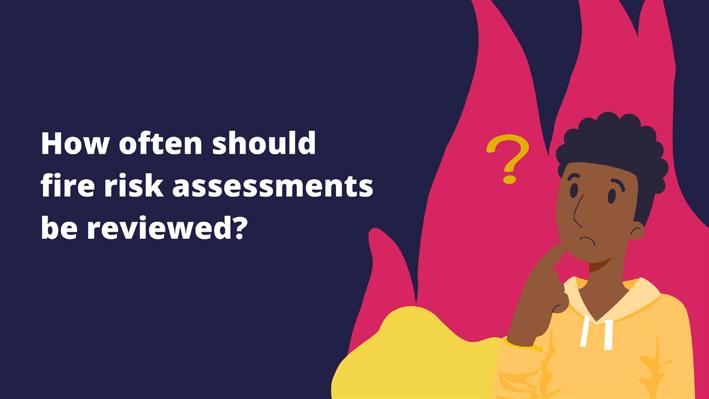
There is no one-size-fits-all answer to this question since the frequency at which fire risk assessments should be reviewed varies depending on various factors. However, here are some general guidelines:
Regular Review: It’s essential to review your fire risk assessment regularly, at least once per year. Frequent check-ups enable you to stay ahead of any changes in legislation or newly identified risks.
Legislation Updates Fire safety regulations evolve over time as new guidelines and advancements become available. As a business owner in England and Wales, it is crucial to stay informed about any changes in legislation or industry best practices that may impact how you manage fire risk in your workplace. Incorporate these updates into your assessment to maintain compliance with legal requirements.
When Changes Occur: Anytime significant changes take place within your property – such as renovations, new equipment installations, or changes in occupancy –it’s essential to review and update your assessment.
After a Fire-Related Incident: If any fire-related incident occurs within your premises or surrounding area, it’s crucial to re-evaluate your current fire safety measures and adjust them accordingly.

The law requires that a ‘responsible person’ be appointed to manage fire safety in any non-domestic premises or common areas of residential properties.
This may include:
• Employers with control over their workplace
• Property owners or landlords
• Occupiers with significant control over their premises
• Managing agents or facilities managers
The responsible person’s duty is to ensure the safety of employees, visitors, and residents by conducting regular fire risk assessments, implementing appropriate fire protection measures, and maintaining up-to-date records.
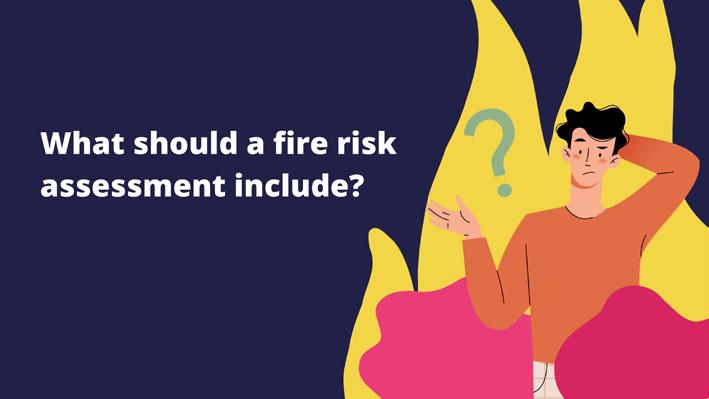
The primary goal of these assessments is to identify potential hazards, reduce the likelihood of a fire breaking out, and ensure appropriate safety measures are in place.
1. Identify Potential Fire Hazards
2. Evaluate Potential Sources of Fuel
3. Identify People at Risk
4. Evaluate Existing Fire Safety Measures
5. Develop an Emergency Plan
6. Implement and Maintain Controls
7. Regularly Review Your Assessment
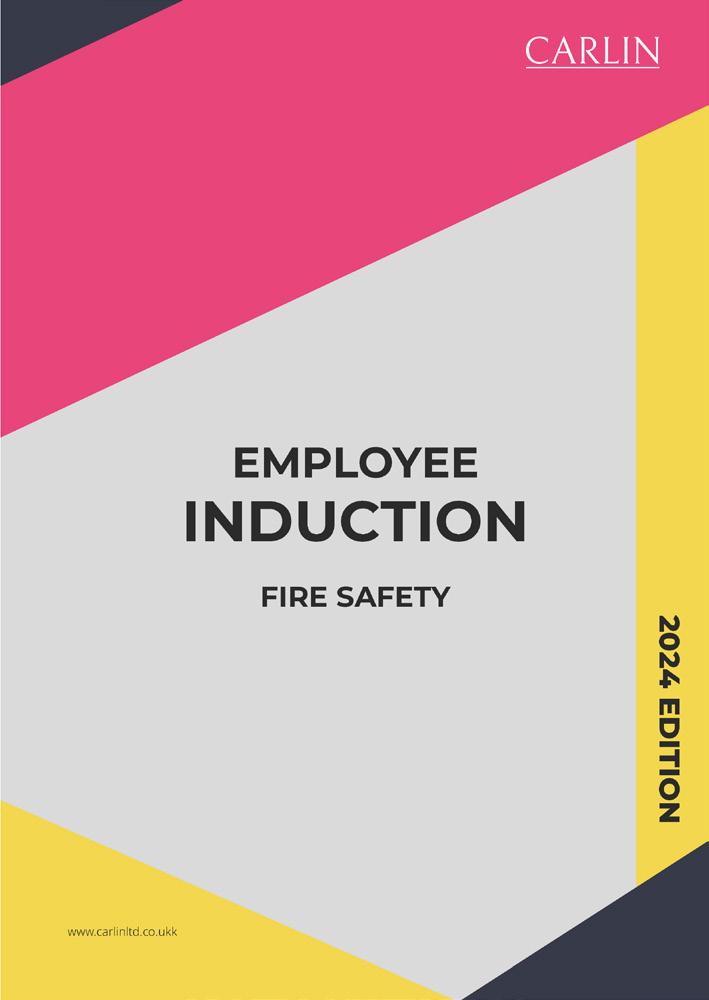
WE DO the likelihood of a fire starting your premises?

Commercial property owners have a legal and ethical obligation to ensure their buildings are safe from potential fire hazards.
How can we help?
Carlin’s Fire Risk Assessors provide comprehensive assessments for commercial properties in Southampton ensuring safety measures are in place, focusing on protecting life and property.
Our services include on-site assessments, detailed action plans, and follow-up calls to discuss findings and clarify any points raised.

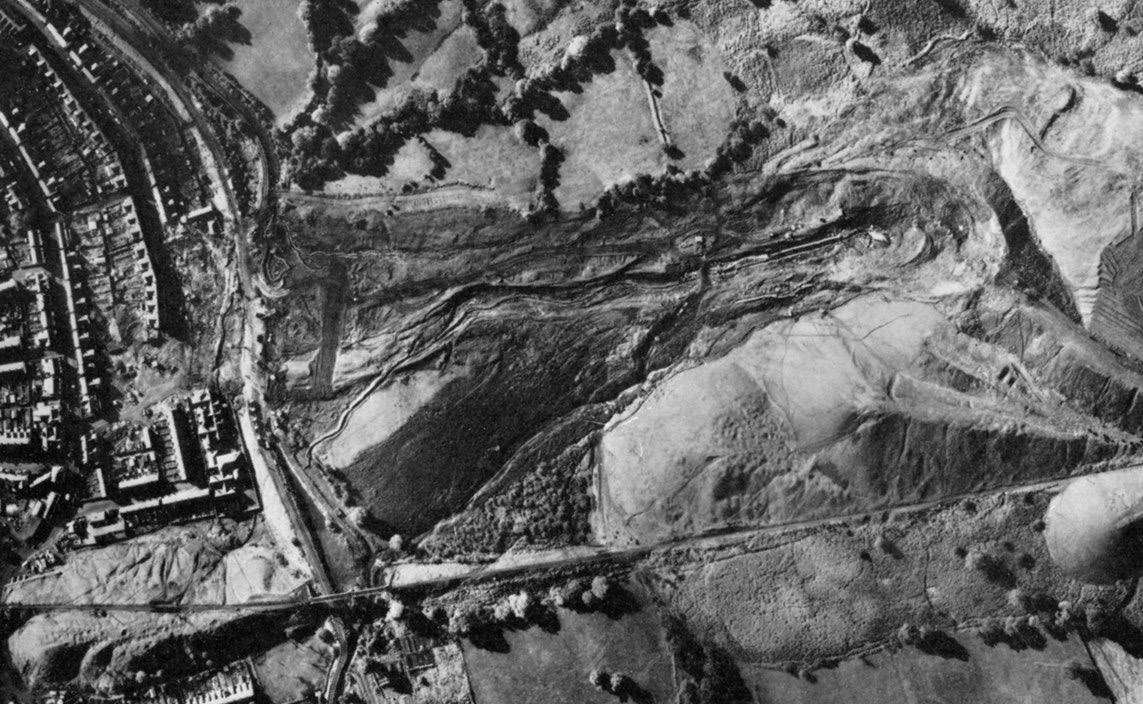
The Aberfan Disaster, one of the most harrowing catastrophes in British history, occurred on October 21, 1966, when a coal waste tip collapsed into the village of Aberfan, Wales, killing 116 children and 28 adults
For the children of Aberfan, October 21 was supposed to be a day of excitement and anticipation. It was the last day of school before the half-term holiday, and the students of Pantglas Junior School had just settled in for their morning lessons when disaster struck. In an instant, the classrooms were engulfed with a tidal wave of thick, black sludge that buried everyone in its path. Many of the children never stood a chance, their young lives extinguished in a matter of moments.
The teachers of Pantglas Junior School also paid the ultimate price in their efforts to protect their students. Nansi Williams, the school meals clerk, used her body to shield five children, who miraculously survived. Dai Beynon, the deputy headmaster, attempted to use a blackboard to deflect the oncoming sludge, but he and all 34 pupils in his class were killed. Such acts of bravery in the face of unimaginable horror underscore the deep bonds of love and sacrifice that existed between the educators and the children in their care.
The survivors of the Aberfan Disaster carry physical and emotional scars that have lasted a lifetime. Many were left with debilitating injuries, from broken bones to crushing asphyxiation that damaged their lungs. Others escaped physical harm but live with the indelible trauma of that day, haunted by the memories of their classmates and teachers who perished. Studies have shown that half of the survivors have experienced post-traumatic stress disorder at some

point in their lives, with many still plagued by nightmares and flashbacks decades later.
One of the few survivors, Jeff Edwards, still carries the haunting image of a dead classmate resting on his shoulder. Despite being just eight years old at the time, the trauma of that day has stayed with him for over five decades. While his physical injuries healed long ago, the psychological scars remain, a painful reminder of the horror he endured.
Gaynor Madgwick who was also eight, was waiting for her teacher to begin a maths lesson when “within seconds this noise appeared completely from nowhere”.
She said: “It was the most horrific noise, thunder - louder, louder and louder. I remember turning my head seeing this black mass and trying to get up and run for the door.
“Then it was blackout. It literally froze people in their seats.”
The parents and families of Aberfan were left to grapple with unimaginable grief and guilt. Those who lost children were consumed by the overwhelming sorrow of outliving their own flesh and blood. Surviving siblings often felt guilty for living while their brothers and sisters died, and the entire community was left to pick up the pieces of a shattered innocence.
The village experienced a surge in births in the years following the disaster, as if seeking to heal and find new life in the face of such devastating loss.

In the aftermath of the tragedy, Queen Elizabeth II and the Royal Family would play a pivotal role in bringing comfort to the people of Aberfan. Just eight days after the disaster, the Queen and Prince Philip visited the devastated village to pay their respects to the victims and offer solace to the bereaved. Her Majesty walked through the ruins of the school and the surrounding homes, taking in the full scope of the devastation. She met with survivors and the families of those who had perished, offering words of condolence and sharing in their grief.
The Queen’s visit was a powerful reminder to the people of Aberfan that they were not alone in their sorrow. Her presence helped to bring international attention to the disaster and spurred donations to the Aberfan Disaster Fund, which was established to support the survivors and the families of the victims. The fund would go on to raise nearly £1.75 million, a testament to the outpouring of support from around the world.
In the years and decades that followed, the Royal Family continued to play a role in honoring the memories of those lost at Aberfan. In 1973, the Queen returned to the village to officially open the Aberfan Memorial Garden and Cemetery, a sacred space created to remember the victims of the disaster. The garden features a striking memorial wall bearing the names of all 144 who lost their lives, as well as a beautiful bronze statue of a child.
The Aberfan Disaster was a tragedy of unimaginable proportions that left an indelible mark on a small Welsh mining village. While the wounds of that day will never fully heal, the resilience and solidarity of the people of Aberfan serve as a testament to the enduring power of the human spirit in the face of unimaginable loss.
This catastrophe was not merely a consequence of natural events but was exacerbated by human negligence and systemic failures. The lessons learned from Aberfan underscore the critical importance of safety regulations, community involvement in risk assessment, and corporate accountability.

1802 Factory Act
1842 Coal Mines Act
1872 Mines Act
1875 Explosives Act
1878 Factory and Workshop Act
1880 Employers’ Liability Act
1891 Factory Act
1897 Workman’s Compensation Act
1901 Factory and Workshop Act
1911 Mines Act
1923 Explosives Act
1926 Lead Paint (Protection against Poisoning) Act
1936 Employment of Women and Young Persons Act
1937 Factories Act
1952 Agriculture (Poisonous Substances) Act
1954 Mines and Quarries Act
1956 Agriculture (Safety, Health and Welfare Provisions) Act
1960 Offices Act
1961 Factories Act
1969 The Mines and Quarries (Tips) Act
1969 Employers’ Liability (Compulsory Insurance) Act
1971 Fire Precautions Act
1974 Heath and Safety at Work Act
1980 Notification of Accidents and Dangerous Occurrences
Regulations 1980 – S.I. No. 637
1985 Reporting of Injuries, Diseases and Dangerous Occurrences Regulations – S.I. No. 2023
1987 Control of Asbestos at Work Regulations
1996 RIDDOR 1995 introduced
2006 Control of Asbestos Regulations
2007 The Corporate Manslaughter and Corporate Homicide Act
2007 Construction (Design and Management) Regulations (CDM 2007) – S.I. No. 320
2010 Equality Act 2010
2013 RIDDOR changes
2014 Flexible Working Regulations
2015 Modern Slavery Act & Construction (Design and Management) Regulations
2021 Fire Safety Act 2021
2022 Building Safety Act
2023 Online Safety Act
One of the most prominent lessons from the Aberfan Disaster is the necessity for stringent regulatory oversight. Prior to the disaster, warnings about the stability of Tip No. 7 had been ignored or inadequately addressed by both colliery management and government inspectors. Post-disaster investigations revealed glaring deficiencies in both local and national regulatory frameworks tasked with overseeing References/Image Credits Aberfan disaster - Wikipedia “Aberfan: The Fight for Justice”. BBC. Archived from the original on 25 October 2017. Retrieved 13 September 2017. https://www.bbc.co.uk/programmes/b07zk6fj National Archives UK (1966). Tribunal Report: The Aberfan Disaster

mining operations. For instance, there were no specific regulations controlling where or how spoil tips should be constructed or maintained.
Legislative reforms following Aberfan led to significant changes in mining regulations within the UK. The Mines and Quarries (Tips) Act 1969 established specific guidelines for tipping operations and mandated regular inspections by qualified engineers. The case demonstrates that proactive regulation is vital in preventing industrial disasters.
An equally critical lesson is highlighted by examining how community concerns were marginalised before the catastrophe occurred. Villagers had long expressed fears about Tip No. 7’s stability but were persistently ignored by colliery management (Aberfan disaster - Wikipedia). This lack of effective communication between residents and authorities exacerbated an already precarious situation. In contemporary risk management practices, integrating local knowledge into safety assessments has become increasingly recognised as crucial for effective disaster prevention. Ensuring that community voices are heard helps identify potential hazards that may be overlooked by external professionals disconnected from daily local realities.
At its core, the Aberfan Disaster stemmed from an ingrained culture within mining companies prioritising production over safety concerns. The National Coal Board (NCB) exhibited a callous disregard for both its employees’ welfare and surrounding communities. The organisational culture at NCB was marked by a rigid hierarchical structure, where lowerlevel employees felt unable to challenge superiors or raise concerns effectively. This hierarchical rigidity created an environment where critical warnings were stifled or ignored. Employees who foresaw potential dangers lacked channels for meaningful communication with decision-makers.
Furthermore, there was an evident disconnect between local management at collieries and higher-level executives who operated remotely from actual mining sites. This detachment resulted in a lack of understanding and urgency regarding on-the-ground conditions. The NCB exhibited characteristics of a “command-and-control” culture that valued obedience over proactive problem-solving.

Ethical failures were central to the unfolding of the Aberfan disaster. The issue was not just technical oversight but also moral indifference towards human life in favour of industrial efficiency. The NCB’s failure to act upon repeated warnings demonstrated a disregard for ethical responsibility towards community safety.
One striking ethical lapse was in risk management. Responsible organisations must prioritise human safety above all other considerations. However, NCB’s practices reflected an unethical risk-taking approach—continuing with dangerous tipping operations despite known hazards.
Another ethical issue related to accountability and transparency. Post-disaster inquiries exposed attempts by senior officials to deflect blame and minimise their responsibility. A glimpse of which we have seen again more recently with the Sub postmasters scandal. A culture where accountability is disregarded erodes trust both within an organisation and with external stakeholders.
The Aberfan disaster serves as a solemn touchstone on the importance of learning from past oversights to safeguard future generations. Through stringent regulatory frameworks, unwavering commitment to rigorous safety protocols, and fostering transparent dialogue with communities, it is possible to prevent similar catastrophes.
As we reflect on this devastating event near sixty years later, it remains imperative that these critical lessons continue to inform contemporary industrial practices worldwide.

Openreach Limited fined after Dad of Two dies in River. Owen, from Bethesda, died on 6 October 2020 after slipping and falling into the River Aber in Abergwyngregyn while trying to repair a telephone line amid local flooding.
An investigation revealed that there was no safe system of work in place for operations near water, and engineers had not received proper training. Openreach pleaded guilty to breaching health and safety regulations and was also ordered to pay costs of £15,858.35.
HSE inspector Christina Roberts highlighted that Owen’s death could have been prevented with proper safety measures, urging companies to learn from this incident.
A young father has died after an incident at Tata Chemicals Europe’s plant in Northwich

Michael Densmore, a 37-year-old scaffolder from Halewood,
Merseyside, suffered fatal complications from chemical and thermal burns after his foot slipped into a trough containing heated calcium hydroxide. The incident occurred on November 30, 2016, as he worked at the Lostock Hall site. Despite surgery, he tragically died on January 3, 2017, from a hemorrhage related to his injuries.
An investigation by the Health and Safety Executive found significant safety failings at the plant, including inadequate hazardous work permits and lack of warning signs. Tata Chemicals Europe pleaded guilty to breaching health and safety regulations and was fined £1.125 million plus costs. HSE inspector Matt Lea stated that Densmore’s death could have been prevented with proper safety management.
Speaking after the case, HSE inspector Matt Lea said: “This tragic death could have been preventable had Michael Densmore and his colleagues been managed under a robust permit to work system for working in a live chemical plant containing corrosive chemicals which had been heated almost to boiling point.
“Michael should not have been put in this unsafe working situation and should have been warned about the dangers of stepping over the troughs and that they were still in operation.
“Companies should learn the lessons from this incident if they have staff or contractors working in a similar environment and be aware that HSE will not hesitate to take appropriate enforcement action against those that fall below the required standards.”
Recycling company fined after workers exposed to wood dust.
Esken Renewables Limited, a biofuel waste and recycling company, has been fined £160,000 after exposing workers to harmful wood dust at its Middlesbrough facility. An investigation by the Health and Safety Executive (HSE) revealed insufficient dust control measures, which posed risks of asthma and nasal cancer from hardwood and softwood dust.
Despite providing explanations attributing dust spread to recent storms, the company failed to protect employees adequately.
The prosecution highlights the need for industrywide adherence to safety standards in handling hazardous substances.
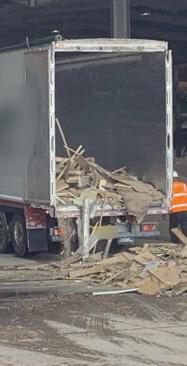

IOSH sets out five key calls to action for next UK Government
The Institution of Occupational Health (IOSH) is calling on the next UK government to focus on protecting people at work if it is to rebuild the economy and reduce NHS waiting lists, in its manifesto for the upcoming UK general election.
Safer, healthier, happier, IOSH says whichever party forms the new government should prioritise improving occupational health services to cut the number of people being made ill by work.
‘We know that poor health and safety harms people, communities, businesses, our NHS and the economy,’ said Ruth Wilkinson, IOSH’s head of policy and public affairs. ‘The most recent figures from the Health and Safety Executive showed that workplace injury and new cases of work-related ill-health, including the growing issue of mental health problems, cost Britain £20.7 billion.
‘And more people being injured or made ill by work means more people seeking treatment, which adds additional pressure onto the NHS. This is pressure that can be avoided by good workplace health and safety.’ To make work safer, healthier and happier, IOSH makes five key calls to action for the new government in its manifesto. These are:
1. Protect workers’ rights to safe, healthy, decent work by endorsing and fully implementing health and safety-related international conventions and ensuring this covers all workers regardless of their employment status.
2. Strengthen and expand the UK’s world-leading system that prevents harm at work through increasing Health and Safety Executive funding and investing in strong occupational health systems.
3. Support businesses to tackle new and emerging workplace hazards by being proactive on laws around new technologies and ensuring non-permanent workers have rights to good working conditions, a minimum wage, working time protection and access to collective bargaining.
4. Promote a diverse, inclusive, skilled and motivated workforce by mainstreaming diversity into health and safety legislation, national policies and strategies and equipping workers with health and safety awareness.
5. Build a more robust, sustainable economy through reviewing and where necessary updating laws and regulations relating to changing health and safety risks and putting people at the heart of the sustainability agenda.
Ruth added: ‘By taking these actions, the government will go some way to reducing the number of accidents in workplaces and the number of cases of ill health caused by work. ‘They are investments into the future of our workers, preventing people from being harmed by work, which will help cut the number of people seeking NHS treatment and support the economy.’
As part of developing its manifesto, IOSH surveyed its members on what they believe the priorities should be for the next government. More than 250 responded, with 90% agreeing that the government should better fund the HSE and other regulators, while 85% felt there should be better protections for non-permanent staff including ‘gig’ workers.

Despite the menopause being a bit of a hot topic in the media recently, it still feels like taboo subject for discussion in the workplace. As a result, many of those affected are suffering in silence and the impact this is having on them, their jobs, and in turn the impact on the businesses they work for, is either being ignored or, perhaps much worse, being used negatively against them.
Why should employers care about the menopause and what should do they need to do about?
Firstly, it’s important to understand that the number of people, and therefore the proportion of your staff, who might be affected by the menopause in some way could be bigger than you think. The menopause can affect anyone who has a menstrual cycle, but there may also be wider implications for others including partners of those going through the menopause and colleagues working closely with them. Employers have a duty of care to their employees so they should be proactive regarding anything that impacts on their health and well-being.
Creating a supportive environment and an educated workforce
Provide training so that everyone, and managers in particular, understand
• What the menopause is
• How different stages of the menopause can affect people
• What support is available
• How to deal with any issues might arise
Encourage open communication so that people feel comfortable discussing experiences. At the same time, also provide opportunities for private conversations to allow people to raise things affecting them personally if they prefer to.
The menopause can have both physical symptoms, such as hot flushes and palpitations, and mental symptoms such as anxiety and low mood. Consider what adjustments may be required to someone’s role or working conditions to support them, for example, if they experience hot flushes, can they adjust their uniform or open a window for fresh air? Are they able to take regular breaks to use toilet facilities?
Consider introducing a Menopause Policy laying out what support is available and how to access it and how any related issues will be managed. You may also want to have an independent HR review of your other existing policies to ensure that they align with your approach e.g. your absence management policy.
Remember though, that everyone’s experience of menopause will be different, so do allow for some flexibility in your approach.

Whilst the menopause is not a protected characteristic, as defined in Equality Act 2010, if someone is treated differently because of their menopause symptoms, which are connected to any protected characteristic then it could be deemed as discrimination. E.g. If someone is making unkind jokes about them being old because they are experiencing menopause symptoms, it could be seen as discriminatory behaviour as ‘age’ is a protected characteristic.
Additionally, in some cases menopause symptoms may be classed as a disability. In these cases, additional adjustments may be required. Consider using an Occupational Health Service provider for advice. In addition to looking after your employees’ physical and mental well-being and meeting your legal obligations, being supportive and proactive around menopause issues can have other benefits to your business including reducing absence levels and improving staff retention, which in turn can have a positive impact on your bottom line.
This article was written by Pure Human

‣ Find more business support services on Page 22-23

From prostate health or testicular cancer to hair loss and overall fitness, men can face a variety of health concerns.
Fortunately the picture of health issues affecting men is gaining increasing attention from healthcare professionals and policymakers alike.
The growing awareness and emphasis on men’s health stems from the stark realisation that men experience certain health challenges more frequently and critically than women, however men are less likely to seek professional help than women.
Cardiovascular disease (CVD) is a leading cause of mortality among men in the UK. It encompasses a range of disorders affecting the heart and blood vessels, including coronary artery disease, stroke, and heart failure. According to AXA Health (2023), CVD accounts for nearly one-third of all male deaths each year. Factors contributing to the high prevalence of CVD among men include unhealthy lifestyles characterised by poor diet, lack of physical activity, smoking, and excessive alcohol consumption. Socioeconomic factors such as stress and insufficient access to quality healthcare further exacerbate these risks.
Strategies such as promoting regular exercise, adopting a balanced diet rich in fruits and vegetables, and reducing tobacco use are pivotal in mitigating cardiovascular risks. Additionally, routine health screenings can help identify early signs of heart disease, allowing for timely medical intervention (Bupa, 2023).
Men are disproportionately affected by mental health disorders such as depression, anxiety, and suicide. Studies reveal that men are less likely than women to seek help for psychological distress due to societal stigmas surrounding masculinity and mental health (AXA Health, 2023).
Consequently, untreated mental health conditions can lead to severe outcomes, including substance abuse and suicidal behaviour. The alarming rate of male suicides underscores the urgency for effective mental health interventions tailored specifically for men. Bupa (2023) emphasises the importance of de-stigmatising mental health care through public education campaigns that encourage open conversations about mental well-being.
This is where workplace mental health programs and Mental Health First Aid Training can play a crucial role in providing resources and building an environment conducive to making seeking help accessible and jugement free.
Prostate cancer remains one of the most common cancers affecting men in the UK. Statistics indicate that approximately one in eight men will be diagnosed with prostate cancer at some point in their lives (AXA Health, 2023). The risk increases with age, particularly among men over 50 years old.
Early-stage prostate cancer often presents no symptoms, making regular screening crucial for early detection and successful treatment. The Prostate Cancer UK charity champions the importance of awareness and screening, particularly for those with a family history of the disease or of African-Caribbean descent, who are at higher risk.
Treatment options range from active surveillance to surgery and radiotherapy, depending on the stage and aggressiveness of the cancer.
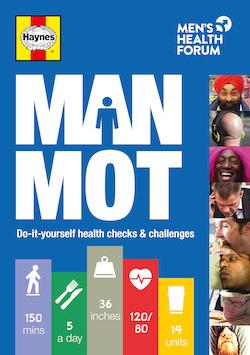
One man in five dies before he’s 65. It’s not just men in mid-life, it’s young men too. And the causes are not just physical, they can also be in our head.
This booklet asks:
• how healthy are you?
• how healthy is your lifestyle?
Scan the QR Code or visit
www.menshealthforum.org.uk
‣ Find more support services on Page 22-23
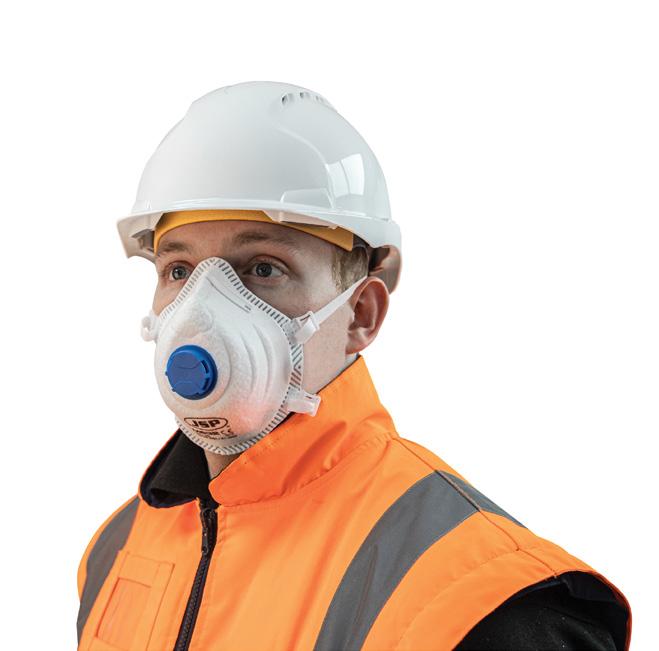




Ensuring safety on business premises is a multifaceted challenge, particularly when it involves the movement of both vehicles and pedestrians. When pedestrians and vehicles share the same space without adequate separation, the risk of accidents increases significantly. Collisions between vehicles and pedestrians can lead to severe injuries or even fatalities, alongside legal and financial repercussions for businesses.
However, by implementing clear, effective measures to separate these traffic types, you can significantly reduce the risk of accidents and even improve operational efficiency.
Key risks include:
• Accidental Collisions: Vehicles and pedestrians moving in the same areas can easily lead to accidents, particularly in busy industrial settings.
• Operational Delays: Conflicts between vehicle and pedestrian traffic can disrupt work-flow, causing delays and reducing overall efficiency.
• Legal Liabilities: Failure to provide a safe environment for both pedestrians and vehicles can result in legal actions and hefty fines under workplace safety regulations.
The Health and Safety Executive (HSE) provides clear guidelines and regulations to ensure workplace safety, including the segregation of pedestrian and vehicle traffic.
Key regulations include:
• The Health and Safety at Work etc. Act 1974: This Act places a duty on employers to ensure, so far as is reasonably practicable, the health, safety, and welfare at work of all employees.
• The Workplace (Health, Safety and Welfare) Regulations 1992: These regulations require employers to provide suitable and sufficient traffic routes to ensure safe movement for pedestrians and vehicles.
Create clearly marked pedestrian walkways that are physically
areas, vehicle-only zones, speed limits, and any other relevant

move at safe speeds when near pedestrian areas. Speed bumps, rumble strips, and clear speed limit signs can help enforce this. Limiting vehicle speed reduces the likelihood of accidents and minimises the severity of any incidents that do occur.
4. Lighting and Visibility
Ensure that all pedestrian and vehicle areas are well-lit, especially during early morning and evening hours or in indoor environments with limited natural light. Good lighting improves visibility, helping both drivers and pedestrians see each other more clearly.
Provide regular safety training and rules for all employees and visitors to your premises. Educate them about the importance of using designated walkways, adhering to speed limits, and being aware of their surroundings. Regular safety briefings can reinforce these messages and keep everyone alert to potential hazards.
Conduct regular safety audits to assess the effectiveness of your segregation measures. Identify any areas where pedestrian and vehicle interactions are not adequately controlled and implement corrective actions promptly. Involve employees in these audits to gain insights from those who navigate the premises daily.
By adhering to the guidelines set forth by the Health and Safety Executive and incorporating best practices into your daily operations, you can create a safer, more efficient, and more productive work environment for everyone involved.

In our feature article on the Aberfan Disaster (page 10) it was highlighted in the investigation that the National Coal Board’s organisational culture was a rigid hierarchical structure, where employees felt unable to challenge superiors, raise concerns or report hazards effectively.
We know from experience that organisations that encourage employees to report potential hazards without fear of reprisal, have been instrumental in reducing workplace accidents and promoting a safer work environment. However, while the benefits are significant, there are also pitfalls that organisations must navigate to maintain an effective system.
A proactive hazard reporting culture heightens safety awareness among employees. When workers are encouraged to report hazards, they become more vigilant and conscious of their surroundings. This increased awareness helps in identifying and mitigating risks before they lead to accidents.
Preventive Action
Early identification of hazards allows for timely preventive action. Organisations can address issues before they escalate into serious incidents, thereby reducing the occurrence of workplace injuries and illnesses.
Regulatory Compliance
In the UK, health and safety regulations, mandate the reporting of certain types of workplace hazards and incidents. A strong reporting culture ensures compliance with these legal requirements, helping organisations avoid fines and legal repercussions.
Continuous Improvement
Hazard reports provide valuable data that organisations can analyse to identify patterns and trends. This information is crucial for continuous improvement of safety policies and procedures, leading to a more resilient and safer work environment over time.
When employees see that their concerns are taken seriously and addressed promptly, it fosters a sense of trust and engagement. This positive feedback loop can boost morale and encourage more proactive participation in safety programs.
Despite the encouragement to report hazards, there can be a tendency for under-reporting. This may stem from fear of reprisal, lack of awareness, or scepticism about whether reports will lead to meaningful action. Under-reporting undermines the effectiveness of the hazard reporting system.
Overwhelming Volume of Reports
A very active reporting culture can sometimes lead to an overwhelming volume of reports, including minor issues that may not require immediate attention. This can strain resources and divert attention from more critical safety concerns.
Inconsistent Follow-Up
If reported hazards are not consistently followed up with corrective actions, it can erode trust in the system. Employees may become disillusioned and less likely to report hazards in the future, thinking their efforts are futile.
Reporting Fatigue
Constantly reporting hazards without seeing visible improvements can lead to reporting fatigue. Employees might feel that their efforts are not valued, leading to disengagement from the reporting process.
Management Resistance
In some cases, management may resist fully embracing a hazard reporting culture due to perceived costs or disruptions to operations. This resistance can create a hostile environment for hazard reporting and inhibit the development of a truly effective safety culture.


To maximise the benefits and mitigate the pitfalls of hazard reporting cultures, organisations can adopt several strategies:
Clear Communication
Ensure that all employees understand the importance of hazard reporting and know how to report hazards easily. Regular training and clear communication can help reinforce this message.
Anonymity and Protection
Implement measures to protect employees who report hazards, such as anonymous reporting options and antiretaliation policies. This helps alleviate fears of reprisal and encourages more open reporting.
Efficient Follow-Up
Develop a robust system for prioritising and addressing reported hazards. Quick and effective follow-up demonstrates that the organisation takes reports seriously and values employee input.
Feedback Loops
Provide feedback to employees about the actions taken in response to their reports. This transparency helps build trust and keeps employees engaged in the safety process.
Balanced Approach
Strike a balance between encouraging reports and managing the volume of minor issues. This can be achieved by training employees on what constitutes a reportable hazard and streamlining the reporting process to filter and prioritise issues effectively.
In conclusion, there is no doubt that a well-implemented hazard reporting culture can significantly enhance workplace safety and health. While there are challenges to overcome, the benefits far outweigh the pitfalls when organisations are committed to creating a culture of openness, trust, and continuous improvement.
By addressing the common issues we have highlighted and maintaining a proactive stance, we can create better workspaces and can continue to advance towards a safer and healthier future for all employees.

MYTH: Safety precautions are inconvenient and slow you down.
REALITY: Taking the time to follow safety procedures can prevent injuries and ultimately save time in the long run.
MYTH: Young and healthy people don’t need to worry about safety.
REALITY: Accidents can happen to anyone, regardless of age or health.
MYTH: Fear of embarrassment prevents people from asking for help in dangerous situations.
REALITY: Prioritising safety and seeking help is responsible, not embarrassing.
MYTH: I’ve been doing this for years without getting hurt, so I’m safe.
REALITY: Experience isn’t enough; complacency can lead to accidents.
MYTH: It’s not my responsibility to report unsafe conditions; someone else will do it.
REALITY: Everyone has a responsibility to create a safe workplace and speak up about potential hazards.
MYTH: I can handle a minor fire on my own.
REALITY: Even a seemingly small fire can quickly escalate and become uncontrollable. It is crucial to follow the proper procedures and evacuate immediately. Attempting to extinguish a fire without proper training and equipment can lead to severe burns or inhaling toxic smoke.
Source Credit: www.safetypedia.com


All our courses can be booked online at www.carlinltd.co.uk/ training or you can use the unique QR code next to each course to book your place.
WB Webinars/Online Attendance Only
G4 The Mill House Mill Road, Totton, Southampton SO40 3AE L1
L2
Suite 4, Kingfisher House, Rownhams Lane, North Baddesley, SO52 9LP
Why investigate safety incidents?
Uncover the critical importance of investigating safety incidents with our insightful webinar. Geared towards safety managers, and anyone responsible for workplace safety, this webinar explores the pivotal role of incident investigation in preventing future accidents and improving overall safety performance.
30th July 2pm FREE
This course provides learners with the knowledge to recognise a wide range of mental health conditions and learn about the support/therapy provided by professional healthcare providers. They will know how to start a supportive conversation and when and how to signpost a person to seek appropriate professional help.
2nd - 3rd September 9am - 4pm
£325.00 +VAT Per Person
The course is designed to equip individuals with the knowledge to perform thorough risk assessments in their area of expertise. It targets those responsible for conducting risk assessments in the workplace, defining a ‘competent person’ as someone with adequate skills, experience, and training. The curriculum consists of seven modules, including UK legislation, accident costs, effective risk assessment practices, hierarchy of control, pitfalls of poor assessments, method statements, and communication.
24th September 9am - 1pm
Non-Members £100.00 +VAT Per Person BOGOF for Carlin Members
This course covers a wide range of topics, including risk assessment, legal compliance, hazard identification, and emergency preparedness. Participants will learn practical strategies for creating a safe and healthy work environment, implementing robust safety management systems, and fostering a positive safety culture within their organisations.
This course offers invaluable insights and tools to enhance your capabilities and drive continuous improvement in workplace safety.
21st - 22nd November 9am - 2pm
£425.00 +VAT Per Person BOGOF for Carlin Members
Unlock the power of effective risk assessment with our webinar, ‘Risk Assessments: Why and Pitfalls.’ Tailored for professionals in various industries, this webinar delves into the crucial role of risk assessments in ensuring workplace safety and compliance. Led by seasoned risk management specialists, attendees will explore the significance of proactive risk assessment practices in identifying, evaluating, and mitigating potential hazards.
Additionally, we’ll address common pitfalls to avoid when conducting risk assessments, equipping participants with valuable insights to enhance their risk management strategies.
Join us to deepen your understanding of risk assessment fundamentals.
26th November 2pm FREE
Dedicated Support
Tailored to your industry
Flexibility and convenience
Cost Effective
If you are looking to develop and inspire a group of employees, our creative in-company training services enable you to have a programme developed in partnership with you to deliver the solution that suits your culture, learning style and needs of your people.
For details of in-company training and developed tailored courses please call us on 01794 330925

For full details of current courses, fees and dates visit: www.carlinltd.co.uk/training
Example courses available
IOSH Managing Safely®
IOSH Working Safely®
CITB SMSTS
CITB SSSTS
CITB SEATS
CITB H&S Awareness
First Aid At Work
Emergency First Aid
CPR and AED
First Aid for Mental Health
Supervising First Aid for Mental Health
Abrasive Wheels
Cable Avoidance
CDM Duty Holders
Manual Handling
Risk Assessor
Working at Height
Vehicle Marshaller
Mathew, Jospeh Gallagher Ltd

UK Cleaning Products Industry Association (UKCPI) ukcpi@ukcpi.org www.ukcpi.org
UKCPI provides expert and balanced information about cleaning and hygiene in the home and in the workplace.
British Cleaning Council info@britishcleaningcouncil.org www.britishcleaningcouncil.org
Established in 1982, the British Cleaning Council (BCC) is the authoritative, collective voice of UK’s cleaning, hygiene and waste management industries. From contract cleaning to waste management, pest control to housekeeping, training providers to machine manufacturers, chemical suppliers to wheelie-bin washers –the BCC coordinates, campaigns and supports the affairs of the UK’s entire commercial cleaning ecosystem.
Mental Health UK www.mentalhealth-uk.org
Working UK-wide, we deliver both national and local services that enable and empower people to understand and manage their mental health in a person-centred and empathetic way. With our local service delivery and national expertise in supporting people whose lives are affected by mental health problems, we have been able to mark a significant footprint in the areas that deeply challenge our mental health and stability.
Samaritans www.samaritans.org
To talk about anything that is upsetting you, you can contact Samaritans 24 hours a day, 365 days a year. You can call 116 123 (free from any phone), email jo@samaritans.org or visit some branches in person. You can also call the Samaritans Welsh Language Line on 0808 164 0123 (7pm–11pm every day).
Campaign Against Living Miserably (CALM).
You can call the CALM on 0800 58 58 58 (5pm–midnight every day) if you are struggling and need to talk. Or if you prefer not to speak on the phone, you could try the CALM webchat service.
Hampshire and Isle of Wight Fire and Rescue 023 8038 6390 www.hantsfire.gov.uk
Pack a Picnic and Protect the Countryside this Summer

The RSPB in Hampshire and Hampshire and Isle of Wight Fire and Rescue Service (HIWFRS) are asking members of the public to help prevent wildfires across the countryside this summer. 2023 was confirmed as the world’s hottest year on record according to the Met Office and 2024 could see high temperatures and heat waves again. The charity is reminding visitors to RSPB Engalnd nature reserves that BBQ’s and campfires are not permitted, but picnics are very welcome.
The Badgeman LTD info@thebadgemanltd.co.uk www.thebadgemanltd.co.uk
Specialising in custom made, bespoke enamel pin badges, scarfs and flags Thebadgeman Ltd offer customers in the UK & worldwide an unrivalled quality of product, service and price as well as wide variety of exclusive pin badges from stock. Contact us to discuss your requirements.
Footner Ewing www.footner-ewing.co.uk
Established for 200 years, we are a well-respected firm of solicitors in Hampshire with offices in Southampton city centre, Romsey, Shirley, Totton and Wickham. We undertake legal aid work and pride ourselves on our personal, individual style of service. Family Law, convenyancing, wills, trusts and probate, criminal law, commercial law and employment disputes.
The Flagman LTD info@theflagmanltd.co.uk www.theflagmanltd.co.uk
Specialising in custom made, bespoke flags, banners and gazeebos, The FlagMan offers customers in the UK & worldwide an unrivalled quality of product, service and price. Contact us to discuss your requirements.
HJA Solutions info@hjasolutions.co.uk www.hjasolutions.co.uk
We provide a wide range of professional services to get your invoices paid and to assist IP’s with their case management. We promise to provide every service with empathy and a smile!
Mercury Systems
mike.keats@mercury-systems. co.uk www.mercury-systems.co.uk
Mercury Systems aim is to ensure that businesses of all sizes are making the most of their IT, regardless of budget. We’re always on hand to help your business! Whether it’s solving IT problems, providing managed support on a daily basis to ensure your systems are working as they should.
DOT Print 01277 226 310 enquiries@dotprint.ltd.uk
Unit 2 Hutton Industrial Estate Wash Road
Brentwood Essex CM13 1TA
We print Better Workspaces Magazine and so much more.
We produce all printed marketing including flyers, brochures, reports, folders, newsletters, leaflets, posters, stationery and so on. We also offer large-format printing enabling us to produce larger posters and canvas wraps. These are just a few of the many print solutions we have helped our clients to produce.
PMX Coatings
sales@pmxcoatings.co.uk www.pmxcoatings.co.uk
At PMX Coatings we are leaders in the supply and installation of film products, signage and graphics and are always putting the customer first. We have a wide range of products, services and expertise, so whether you are looking for film installation or supply, graphics or signage for your business or vehicles, or specialist training in installation, we’re here to help.
Pro fab
mark@pro-fabrication.co.uk www.pro-Fabrication.co.uk
We make metal work for you. Whether you come to us with your designs and just want us to build it, or you have a problem you want us to design and build the solution for, we can take care of it. We have the equipment, facility, and team to cater for heavy steel fabrication in construction, to gates and balustrades, for home and office, to welding repairs and building intricate units from Aluminium, for manufacturers.

Pure® Human Resources
steph@purehumanresources.co.uk www.purehumanresources.co.uk
Suite 4, Kingfisher House, Rownhams Lane, North Baddesley, Southampton SO52 9LP
Experienced and commercially-minded Human Resources Consultancy
Helping businesses realise their potential and build competitive advantage through individual, team and organisational capability.
Pure® Human Resources is a Hampshire based HR consultancy, helping businesses realise their potential and build competitive advantage through individual, team and organisational capability.



